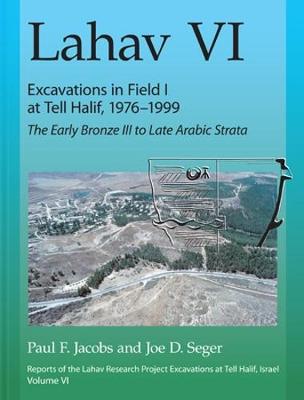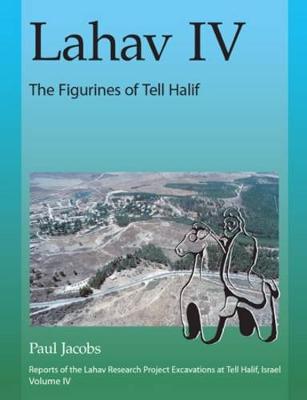Lahav
1 primary work • 3 total works
Book 6
Lahav VI: Excavations in Field I at Tell Halif, 1976-1999
by Joe D. Seger and Paul F. Jacobs
This is the sixth volume in the series of reports on investigations by the Lahav Research Project (LRP) at Tell Halif in Southern Israel. This work focuses on the Project's efforts in Field I conducted during eight excavation seasons between 1976 and 1999. Field I was opened down the northeast slope of the tell in order to assess the long-term history of occupation at the mound site. Its excavation work documented the presence of fifteen primary occupation strata, including 46 sub-phases, stretching from the Early Bronze III period in the mid-third millennium B.C.E. to modern times. The major exposures include four strata of EB III remains (Strata XV to XII), and another five of LB to early Iron I materials (Strata XI to VII). Traces of Iron II (Stratum V)I and Persian (Stratum V) remains were found in one area at the crest of the mound, where levels were otherwise disturbed by a modern army trench and Bedouin graves (Stratum I). A few modest remains of Late Roman/Byzantine (Stratum III) and Islamic (Stratum II) eras were identified in downslope areas.
These excavations revealed that, following a robust occupation on the site's Eastern Terrace in the EB I period, it lay fallow in EB II, settlement only to recover on the hillock to the west as a major fortified enclave in EB III. Then, after another gap in occupation during the EB IV and MB periods, it recovered again in the early LB I era, becoming an emporium associated with Egyptian trade, hence thriving, with continuity of occupation into the Iron Age and beyond.
This volume appears as the fourth in a series of reports on the investigations of the Lahav Research Project (LRP) at Tell Halif, located near Kibbutz Lahav in southern Israel. The book and CD, also titled The Figurines of Tell Halif, contain the publication of the terra-cotta and stone figurine assemblage discovered in the Phase III excavations by LRP. The book presents the text of the report, including relevant archaeological contexts, while the CD is the primary source for detailed information about the figurines. It presents color photographs of each artifact, as well as artist's drawings and QuickTime movies, along with descriptions and a working typology of the mixed Iron II, Persian, and Hellenistic period terra-cottas. Together, book and CD offer the entire corpus of 794 figurine and statue fragments and provide an invaluable addition to the corpus of Levantine figurines.
Lahav VII: Ethnoarchaeology in the Tell Halif Environs
by Joe D. Seger and Karen Seger
This seventh volume of final reports of the Lahav Research Project's efforts at Tell Halif in Southern Israel focuses on the team's excavations and related regional ethnographic research at adjacent Khirbet Khuweilifeh, an early twentieth-century settlement of Bedouin and Arab fellahin clients. These efforts illustrate the symbiosis between the itinerant Bedouin and their seasonal sharecropper neighbors along the northern flanks of the Negev desert during and following the First World War in southern Palestine.
The stratigraphic excavation and recovery of material culture from Cave Complex A revealed a pattern of occupation dating from the late nineteenth century C.E. up to the mid-1940s and produced hundreds of artifacts and samples, giving testimony to the lifeways of the fellahin who had inhabited the complex. The associated ethnographic research with Bedouin sheikhs and Hebron-area merchant informants established that the Complex's most recent occupants were the family of a plow maker named Khalil al-Kaayke. The studies elucidated in this volume articulate in more detail the family's patterns of subsistence, showing the interdependence of the Bedouin and fellahin partners. Examination of the pottery remains provides a profile of the site's Stratum I, early twentieth-century ceramic forms and also reveals earlier Islamic-period and pre-Islamic traces.
Over the past century the lifeways of these early twentieth-century Bedouin and their fellahin village neighbors in southern Palestine have been rapidly disappearing. This volume serves to chronicle and preserve data on their waning history and culture.


